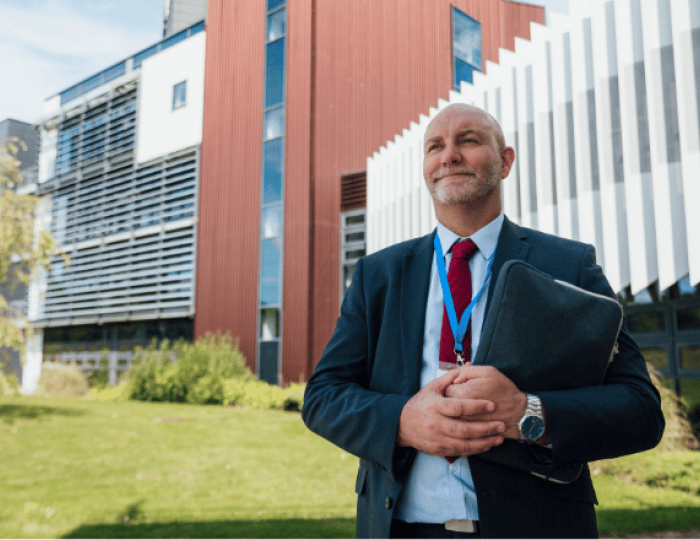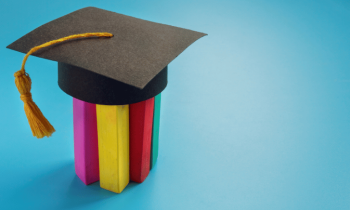We all have moments when we yearn for a return to pre-Covid-19 days, particularly when we seem to be stuck in a Groundhog Day spiral of shocking headlines, restrictions and lockdowns.
So whenever there’s a glimpse of brighter times on the horizon with positive news about vaccine programmes and falling infection rates, it’s tempting to hope for a wholesale shift back to life as it was before the pandemic. But the fact is, life will never be the same.
This may sound alarming, but it needn’t be because although we can’t put Covid-19 back in Pandora’s box, some of the adjustments we’re having to make to our lives could lead to a genuinely better way of working.
Optimism and opportunity
History has shown us that turmoil, no matter how tragic, can be a driver of innovation. Although the pandemic will continue to cast a black cloud over our lives for some time yet, there are some positives to take from the new working environment that it is creating. And the education sector could be particularly well placed to embrace these positives.
After all, the sector is blessed with its fair share of optimists. Teachers and school leaders enter the profession with the intention of opening up opportunities and securing brighter futures for children and young people. They are working harder towards this purpose than ever with inequality gaps widening and disadvantaged children falling behind.
Schools are having to go the extra mile and adapt their teaching and learning to accommodate rapid change.
This impetus to make the best of difficult situations has been plain to see throughout the different phases of the pandemic with teachers managing split cohorts of children learning at school and at home – and moving their lessons from the classroom out to the playground and onto the laptop screen.
It has been inspiring, humbling and entertaining to read about teachers coming up with new ways to engage their pupils when Covid-19 restrictions kept them apart. Necessity is the mother of invention as one teacher demonstrated when she describes how she gave her pupils feedback using emojis and GIFs, made a scrabble board out of household objects and even used her fridge as a whiteboard.
Technology and tradition
This spirit of innovation could bring a welcome new perspective to teaching and learning.
Our approach to pedagogy still mirrors the original Victorian model with a teacher in front of the class and children learning in groups. Classrooms may be more friendly, colourful and dynamic than they were for our Victorian counterparts, but there’s an argument that learning spaces need to evolve further to meet the needs of all pupils.
In the traditional classroom format it can be difficult to cater for a wide range of abilities, keep everyone interested and engaged, and encourage children to think for themselves.
There could be an argument here for continuing to blend face-to-face teaching with technology even when lockdowns have become a thing of the past. The proliferation of new learning software, apps and online games can be used to great effect alongside in-person teaching to build pupils’ confidence, which has taken a hit during the pandemic.
Many digital resources give teachers the option to differentiate more effectively by setting individual tasks for children to carry out in an enjoyable, low-stress way. This can also help teachers to identify where the gaps are so they can deliver more tailored support to a child.
Blended learning also has a part to play in helping pupils re-integrate into their school setting. Children who feel comfortable answering maths questions on a screen with encouraging feedback from the digital task-setter may be able to overcome their reticence to answering a question in class.
Independence and initiative
While there’s no doubt that supporting children’s learning while they’re at home is a challenge, some children have flourished through remote learning, and have learnt skills that will be vital in a changing workforce where flexible working is likely to become more common.
Many pupils have had the opportunity to develop their ability to access resources online, research topics and present their work skilfully using technology. Sadly, there are also children who have not been able to share this opportunity due to economic circumstances or lack of available devices.
As well as a learning gap, we may see a widening technology gap where some children have become adept at using tools and software, while others have been left behind. That’s where a reshaped education can help by preparing children for a technologically connected world, whether that’s through an introduction to coding, an understanding of where to find information or knowledge of how to communicate electronically.
This will help to create more independent learners who will thrive in the future workplace.
Passions and pursuits
It is not only their technology skills that children have improved while home learning.
Many children have enjoyed taking up additional pastimes and developing new interests while they have been staying at home. Some children have discovered the joys of the outside world with a newfound curiosity for plants and wildlife. Others have enjoyed baking with their families, writing stories or making dance videos.
This learning is important too, as it shows children what they can achieve when they put the effort in, and it gives them a stronger sense of their place in the wider world. Schools can keep these passions alive back in the classroom by encouraging children to share their skills with classmates.
Natural performers might be happy to teach the class a dance, while a cooking enthusiast could show a video of themselves baking their latest showstopper at home.
Communication and creativity
Teachers have also learnt new skills while managing remote learning. Some have found new ways to engage their pupils by screen-sharing simple science experiments, filming art projects or organising music quizzes.
Even teachers who were initially reluctant to appear on camera have discovered fresh sources of creativity by making videos to keep their pupils engaged and learning. This new expertise needn’t go to waste when the school gates are open to all.
Schools can get their best digital communicators to keep up with the video making so they can teach more children than they would usually reach through timetabled classes. Then every child in a school can benefit from brilliant lessons from its most talented English teacher. This would have the added advantage of freeing up other staff members to work in smaller groups on targeted interventions.
We can’t turn the clock back to 2019 and undo the damage unleashed by the pandemic. But what we can do is to take some of the trends to emerge from the crisis and use them to reshape education for a changed world.
How to bring new skills into teaching and learning
- Retain some of the digital teaching tools your school found successful during lockdown, such as podcasting apps or maths games, and use these in combination with face-to-face teaching.
- Encourage colleagues to create videos of their best lessons and use these more widely across the school so all classes can benefit from them.
- Give children the opportunity to share some of the skills they gained while learning from home by getting them to teach small groups of classmates how to plant seeds or sing a new song.
- Build confidence and resilience among pupils by allowing them to answer questions and complete tasks on-screen and then sharing them with the class.
Graham Cooper is a former deputy headteacher and chief marketing officer at Juniper Education. He is also a contributor to a Covid-19 exit strategy white paper which can be downloaded here.










